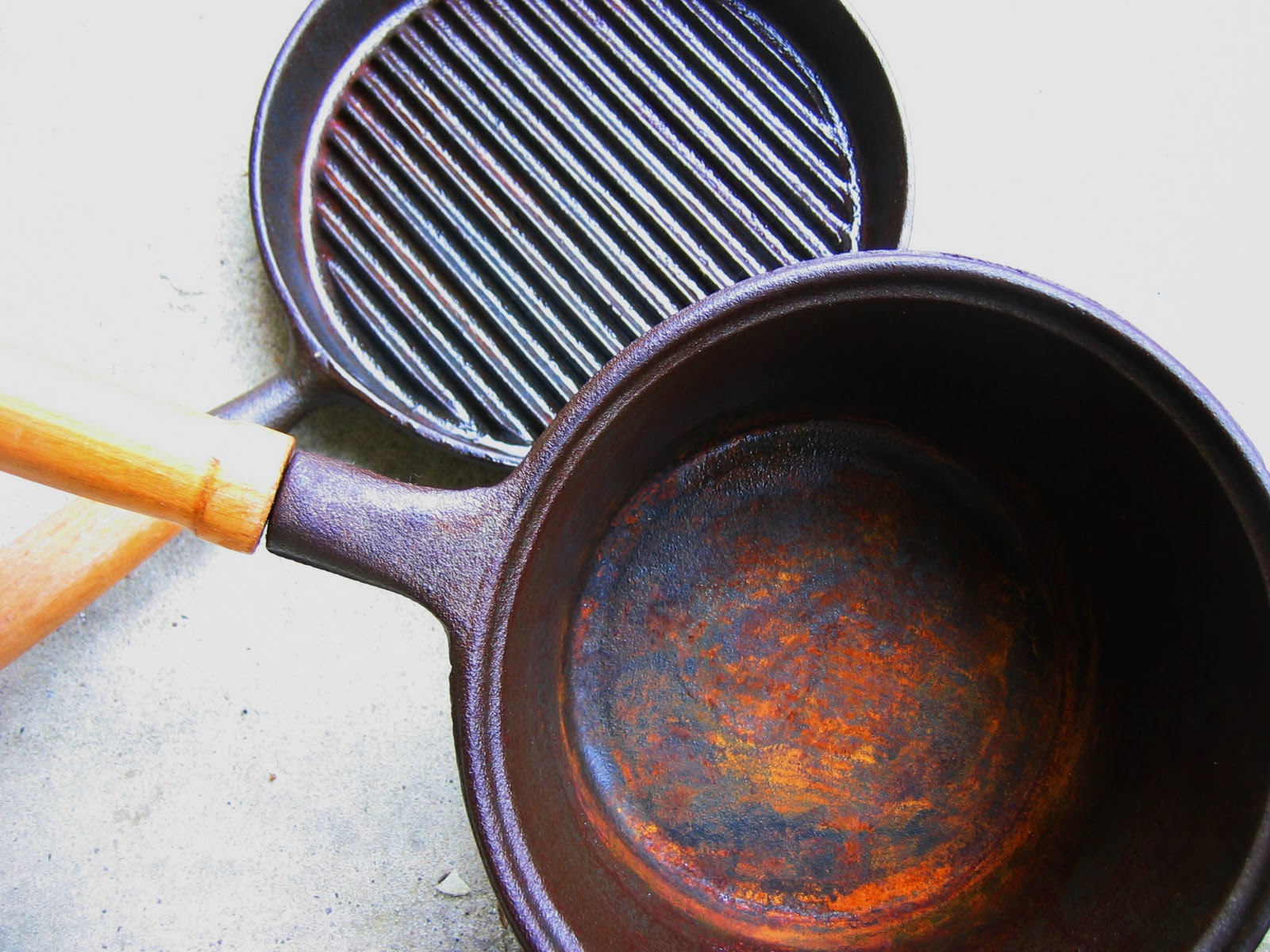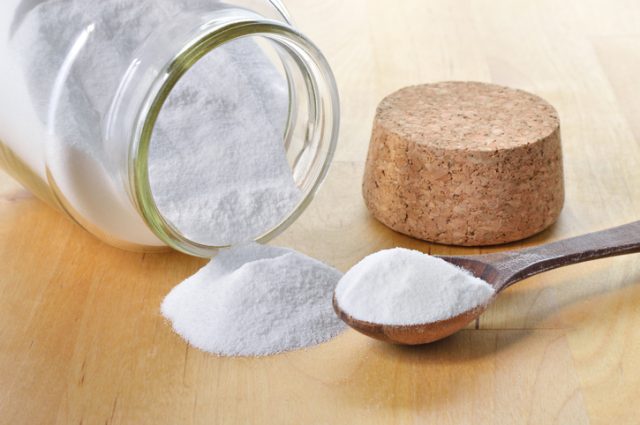


Then dry it with a towel right away or stick it on the stove quickly to warm up and evaporate any lingering water. Once that’s done, scrub it with a good abrasive pad or steel wool and a mild detergent and some warm water. You don’t want to damage the original surface. Use a 50/50 water and vinegar mix and put it in a bucket, plugged sink, or dish large enough for you to submerge your cast iron skillet into it and let your cast iron soak in vinegar 1-8 hours, only as long as needed to remove the rust. To do remove rust from cast iron with vinegar, you’re going to do a vinegar soak. If you are dealing with a rusty cast iron pan, it is totally easy to remove rust from cast iron with vinegar! Well, as long as it’s not so deeply rust or pitted cause then it’s best to just pitch that pan.
#Baking soda to remove rust from cast iron how to
How to Remove Rust from Cast Iron with Vinegar It will likely depend on the type of metal you are trying to seal and its use and purpose. It not only helped prevent rust from forming so fast again (because it will come back) but it also helped the rods slide smoothly and quickly, which is rather important in a game of foosball.īut, you can get something like Turtle Wax, Rust-Oleum spray paint, or other products to help you protect the metal. I did this after I cleaned the foosball table rods. I wish I was! But, I do know that applying some sort of wax or other water-resistant material or painting it, is what you want to do, though some say rubbing it with some light machine oil or gun oil can help too (but again will depend on what you’re removing rust from).Ī simple way to do this is to grab some wax paper and rub it all over the rust-free metal. I am not sure the BEST way to seal metal in order to help prevent more rust from developing. Remove the object from the baking soda soak, rinse with clean clear water, and rub with a rag soaked in denatured alcohol (like isospropyl alcohol, acetone, or rubbing alcohol) to remove excess moisture. If you doubt that’s enough, dissolve 1 cup of baking soda in a gallon of water and let it soak in there for about 10 minutes (which, by the way, baking soda is also a good abrasive and rust-remover, so you can use it to scrub a little more rust off too). To neutralize the acid in the vinegar, rinse the metal in some warm water. Once you have removed the rust as much as you can (sometimes there is still some permanent discoloration of the metal underneath the rust now) it is important to neutralize the acid, dry it and then seal it. You may want to use gloves as your hands will get very black and nasty looking while scrubbing off the rust, not to mention smell like vinegar the rest of the day. RELATED: How to Remove Rust from a Porcelain Sink (Try this method on stains on the exterior of the pot, as well.You could also dip rags or paper towels in vinegar and then place them on the metal to soak there for a while first before scrubbing. Evenly coat the bottom of your pot with the paste, cover it, and let it sit out on your counter overnight.

Make a paste by stirring a few drops of water into a couple of spoonfuls of baking soda. If you've seriously burnt your dutch oven, the first method may not result in a completely clean pot. Once you've scraped away at them, drain the pot and wash it out with dish soap and an abrasive sponge, to scrub out any remaining marks. Let the mixture simmer on the stove as you use a wooden spoon to scrape up the blackened, burnt-on stains. Then add a few big spoonfuls of baking soda (add them slowly as the baking soda will bubble up and foam). Boil Awayįill your dutch oven with water and bring it to a boil. So the next time you try rushing those caramelized onions in your dutch oven and end up with a stained mess (sometimes these things happen), pull out the baking soda and try these methods: 1. How to clean it without investing in every cleaning product on the market? The answer is that little cardboard box of baking soda that's hiding in the pantry. While it now officially looks loved, I started to get frustrated with just how blackened my once-cheery pot had become. But after years of churning out those comforting dinners, I find that no matter how careful I am, the enamel interior burns and stains constantly. One of my prized kitchen possessions is an old, golden yellow Dansk dutch oven that used to be my mom's-it's a constant reminder of childhood casseroles past.


 0 kommentar(er)
0 kommentar(er)
